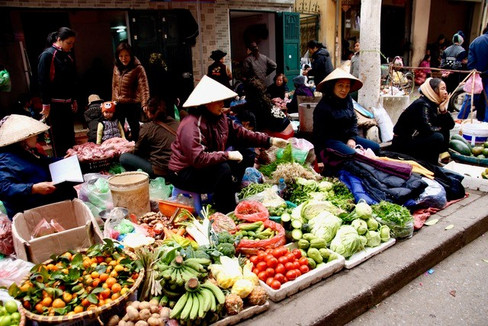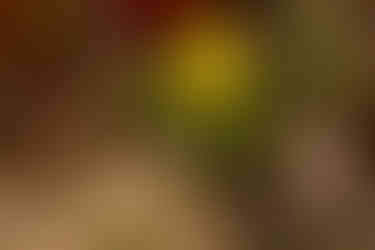BOTANICAL ENCOUNTERS: Vietnamese Lunar New Year, 2012
- k-england
- Feb 1, 2023
- 4 min read
Words and photos by Ida K. Rigby, for Let’s Talk Plants! February 2023.

On January 22 we celebrated the Lunar New Year, so for this edition of this column we are taking a temporary detour from Africa, so I may share photos from a visit to Vietnam during their preparations for Lunar New Year in 2012. Photos are from Hanoi, Ho Chi Minh City and Chau Doc on the Mekong River.
Twenty-twelve was the year of the Water Dragon (which occurs only once every 60 years when the element of water is associated with a year of the dragon).

The Water Dragon symbolizes loyalty; it is also noble, gentle, and intelligent, but tactless, stubborn, and dogmatic. Since the Lunar New Year celebration originated when Vietnam was ruled by China, most years’ animals are based on the Chinese Zodiac; three, however, are replaced by other animals in the Vietnamese Zodiac. This year, 2023, for example, is known in China as the Year of the Rabbit. In Vietnam it is the Year of the Cat. In 2012, both zodiac signs coincided. According to ancient Chinese mythology the animals were in competition for representing years, which would be named after them in the order of their arrival at the Jade King’s banquet. The cat overslept and did not arrive, so is not included in the Chinese lunar calendar. Tet Nguyen Dan is the Vietnamese New Year. Tet is a generic term for festival; it also simply refers to the Vietnamese Lunar New Year. Tet celebrates spring and rebirth. In anticipation, people clean homes and altars. Vendors’ bicycles were piled high with every manner of cleaning supplies.
During Tet itself, however, sweeping is forbidden because you might sweep away the good that has replaced the evil you have swept away. It is a time for family, visiting friends and paying homage to ancestors with offerings of food, fruit, and flowers. Families decorate with bright colors; red and yellow predominate as they bring good luck. Popular plants have their own symbolism. Peach blossoms (Hao Dao) fend off evil spirits and bring luck, so peach tree branches are featured on altars.

Peach branches and trees are often decorated with red strings bearing symbols of good luck and prosperity and with red lucky money envelopes.
The blossoms’ rosy pink stands for good fortune, the brighter the better. Red flowers signal good luck. Peach blossoms are also credited with keeping the family peaceful and healthy. Flower markets also feature orchids and chrysanthemums. Fireworks and street festivals herald the New Year. Street markets and street vendors are very busy selling food, decorations, firecrackers, plants and new clothes for Tet.

Artificial flowers in yellow, red, and other bright, joyful colors are popular as they last longer than the fresh branches and are less expensive.
Peach and kumquat trees grow well in colder climates, so are most popular in the north; the yellow apricot flower (Hot Mai) is more conspicuous in the south. The Marumi Kumquat, Fortunella japonica syn. Citrus japonica, (Cay quat) has round fruit (unlike the little oval fruits we are used to) and is extremely cold hardy. The kumquat tree represents the family over generations, literally a “family tree.” Families display potted kumquats in their living rooms and in front of their houses. In Hanoi, the streets were a flurry of motorcyclists delivering or bringing home potted kumquats.
Families seek out kumquat trees with as many fruit and large glossy leaves as possible. The more fruit the more luck the tree will bring. Another tradition is the five-fruit tray, which incorporates different fruit in the north, central and southern regions of Vietnam. In the north the tray usually has green bananas, oranges, persimmons, plums, kumquats and a pomelo or a Buddha’s hand. In the south other fruit such as papayas, mangos and coconuts are included. Street vendors offered a full array of fruit for the trays.
Since red, yellow and green are auspicious colors, red and yellow fleshed watermelons are popular during Tet. Around Chau Doc boats on the Mekong were piled high with that popular Tet fruit.

Children are given red envelopes with lucky cash, which brings prosperity to both the child and the adult, usually a relative, giving the gift. Another tradition associated with Tet is visiting friends and relatives on the first day of Tet. Since a family’s luck for the year is determined by who the first visitor is, families endeavor to control who crosses the threshold first. One’s actions on that day also set the tone for the rest of the year, so people are very careful about their words and behavior. In the south, Hot Mai, Ochna integerrima, or yellow apricot (totally unrelated to apricots) is the most popular flower; it represents good luck, happiness and joy. It grows well in the south’s more tropical climate, and right around Tet it is bursting with buds and blossoms when other plants are still dormant.
The yellow blossoms stand for prosperity, protection against spirits, good luck, happiness, and joy. Images of the yellow apricot appeared everywhere in Ho Chi Minh City.

In celebration, municipalities set up public displays and streets fill with people celebrating the coming of a new year, another spring, and a fresh start.





























































